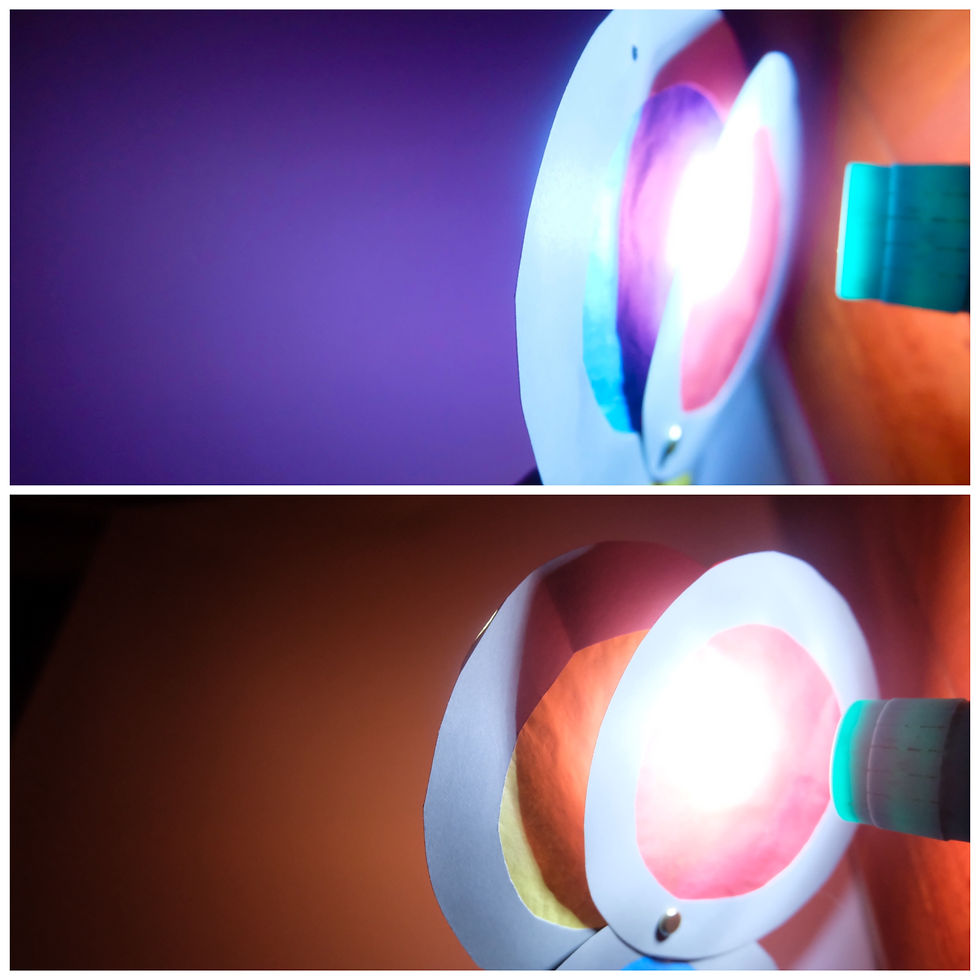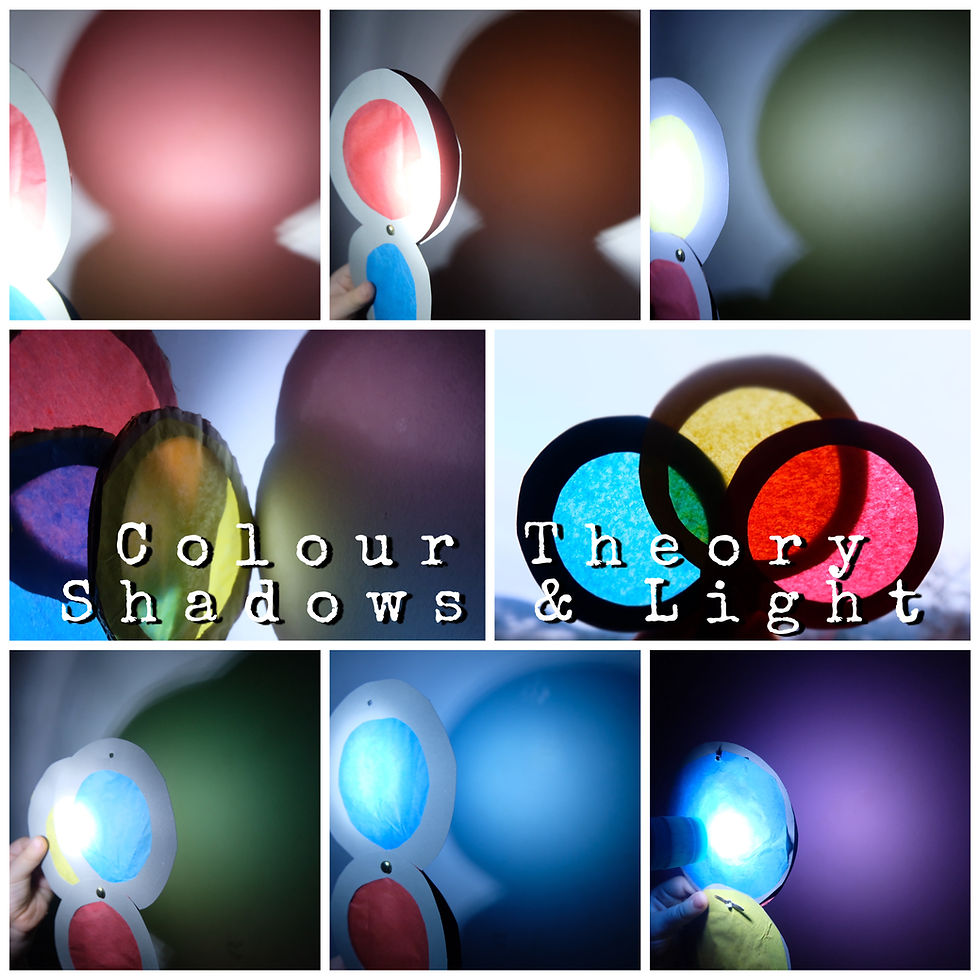- acornsandaprons

- Feb 17, 2021
- 3 min read
This craft is a crafty way of mixing colours using light and shadows! This is a fun approach to colour theory and younger children will learn the colours of the rainbow. Explore which colours are warm and cold and experiment with colour mixing. Use your completed craft, which is basically paper frames and coloured tissue paper as a science experiment by using it with a light source. The primary colours will create the secondary colours by putting two primary colours together over the light. You can make colourful shadows or use them over a window as you would a suncatcher. It’s not the typical way to mix colours together.
You can also tell stories while you display the colours on to the wall. Make it fun for kids by having them use the flashlight to shine the colours themselves.

There are a few options as to how you can view your tissue paper disks, either in the dark with a flashlight or up against a sunny window or on a light table, You decide what is best or try all of the options.

This craft is easy to make but will leave you with hours of fun. You can get creative with your colour theory circles by creating different shapes because it doesn’t have to just be a circle, you can make squares, rectangles, hearts, triangles. etc.
You may also want to make all of the colours of the rainbow, to see why the secondary colours don’t work together the way the primary colours do. The ins below are for the primary colours only, but you may want to try making all of the colours to experiment with.

Shadows:

Lights:




Materials:
coloured card-stock or construction paper.
paper fastener
pencil or pen
scissors
single paper hole puncher
a circle stencil - or a mason jar lid
a glue stick
You will also need a flashlight to create colour theory shadows or a sunny window to create a coloured light theory sun-catcher.

Directions:
1. Lay out the paper - primary colours (yellow, blue and red), or make the frames any colour you want.

2. Trace a circle onto each coloured paper using a stencil or jar lid, and another slightly smaller circle inside of it half an inch apart. Add half a circle at the bottom of the bigger circle for the paper fastener.

3. Cut out each circle template that you made on each coloured paper. Cut the larger circle out, then fold the paper in half to cut the middle circle out.

4. Cut coloured tissue paper to fit onto the back of the coloured circles, matching the primary colours to their corresponding frames that you just cut out. If you made the frames one colour, glue each primary colour on each frame. The most impor step is using coloured tissue paper in primary colours - red, yellow and blue.

5. Glue the cut tissue paper to the paper frames.
It will look like this once you flip them over:
6. Add a hole to the bottom part using a hole puncher.

7. Put a metal fastener into the hole to attach them altogether.
We only created the primary colours, because you will be putting the primary colours togther to create the secondary colours.
To create the science colour theory experiment using your coloured disks; Test out each colour on its own, and name the colours that are displayed. Then, put yellow and red flat against each other so that the circles overlap to create orange, then overlap blue and yellow to create green and red and blue for purple.

You’ll be able to see each colour very vividly!


Create heart shapes or any other shape you’d like!

You may want to create all of the colours to experiment with! Here are the cutout hearts from the underside - the tissue paper is glued onto the paper frame.

Use a flashlight:

or Use sunlight:

Hold them up to a window or any light source.

We hope you have fun creating this craft and exploring the fascinating world of colour theory. Feel free to tag us on instagram @acorns.and.aprons if you create this craft, we would love to see you experimenting with it! You can also email us at acornsandaprons@gmail.com









































































Comments